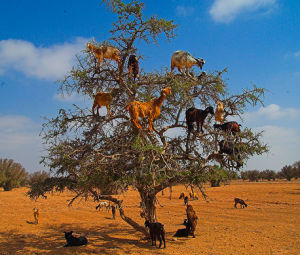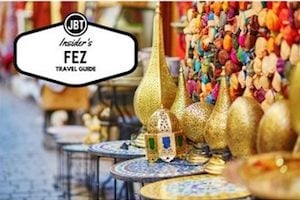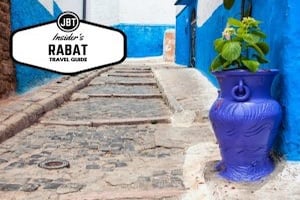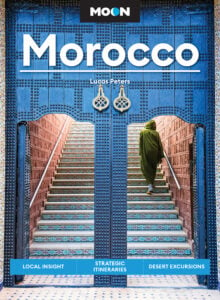
Morocco's Argan Tree
The reserve has 2,560,000 hectares of land under protection. There are some urban areas, forest, and agricultural lands included in this sum. Driving through the area provides a small look at what is being protected. However, if you want a better look at why the reserve is so important a custom Morocco tour is needed. Such a tour includes a walk among the argan trees and a visit to a woman’s coop near the city limits of Essouira where argan oil is produced by hand.
There are two ecosystems within the reserve, which is different from every other reserve or national park in Morocco. The first is a sclerophyllous forest and the second is the desert. The Sahara Desert borders the forest though it’s still far from the golden sand dunes. This places the reserve in the south western section of Morocco or rightfully in the Anti Atlas region.
Fishing and farming villages still exist within the reserve. They are wonderful places to stop and soak up the local culture. A variety of national parks are also incorporated or bordering the forest area. The most important national park is the Souss Masa Natioanl Park. This national forest has many of the Argan trees as well. Both parks are important to the production of argan oil and argan products, many of which are now for sale to tourist and locals alike.

Goats eating Argan Nuts in Morocco
The forest and wildlife on the land can adapt to drought, but there is still a risk of human exploitation. It is one of the reasons the reserves throughout Morocco have been formed. For trekking in the Argan Forest you will want to decide how many days you wish to hike. A family morocco holiday opens up numerous trails that allow for a day trip. After a few hours, you can hit the close by beach of Essouira.
To get a real feel for the Morocco reserve you might want to spend as many days as possible just in this area. You will be welcomed into the villages to study their culture and purchase souvenirs, especially with your family in tote. On other days, you are able to lose yourself in the forest looking for wildlife and other wonders of nature. Any time you spend in the reserve learning about conservation, and any money spent to travel around the reserve goes to helping the forested areas remain for the next generations. This keeps the trees standing and the locals empowered.
For individuals and families who love the environment and want to protect it, trekking the reserve is a must. The trees will rise around you hiding birds, monkeys, and other animals. A simple walk to gander at the fallen or growing argan nuts is an education in itself. This is one of the only places in the world that the argan nut grows and processed.
by Sam Mitchell









Down here in Somaliland we have an Argan tree that grows wildly in our coastal years. traditionally, it is used and believed to be the same usage in morroco. Scientifically it remaain annonomous. Can any help me to identify this tree.
Thanks
Hi Ahmed,
I’m not sure we can be of much help in identifying the tree you’re talking about. You might want to get in touch with someone that works with the Arganeraie Biosphere Reserve for more information.
Good luck!